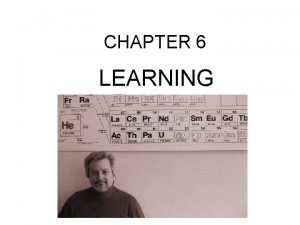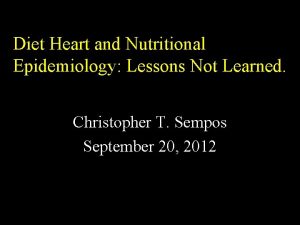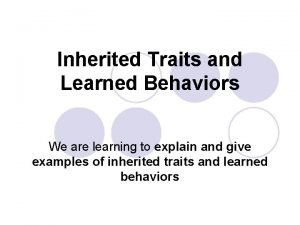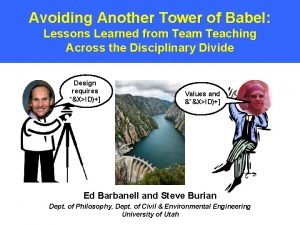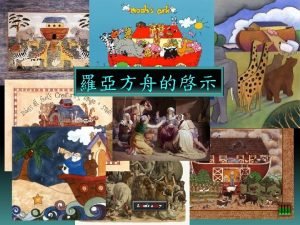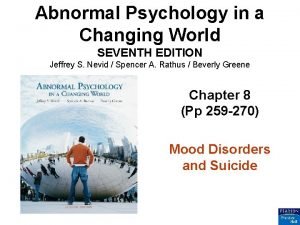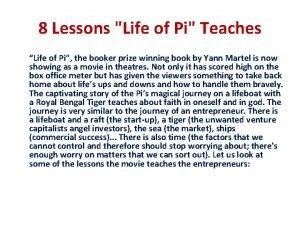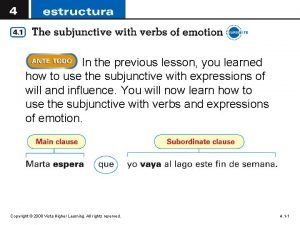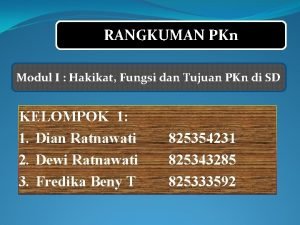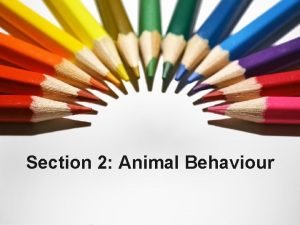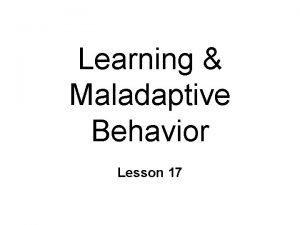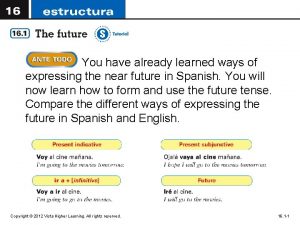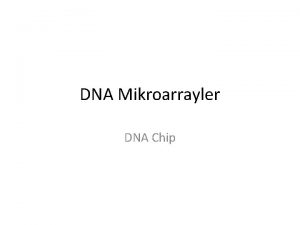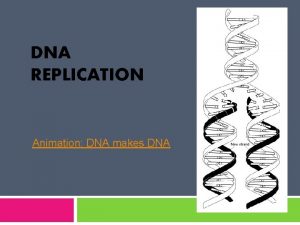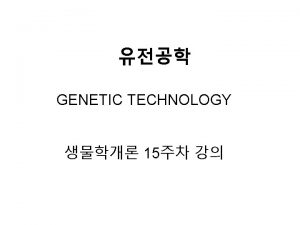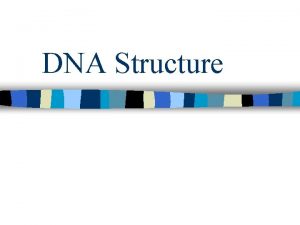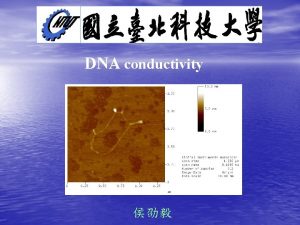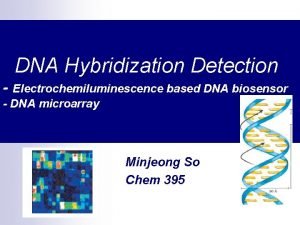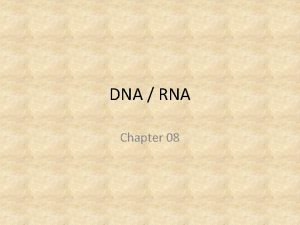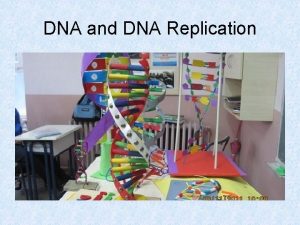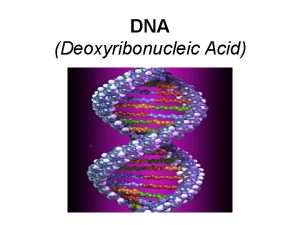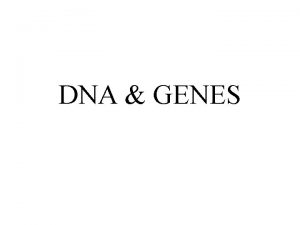What has DNA learned to do It has





























- Slides: 29

What has DNA learned to do? • It has created a species so advanced that it can go in and fix itself.

Genetic Engineering • Genetic engineering involves breaking a DNA molecule and inserting a new gene.

Restriction Enzymes • Are (molecular scissors) enzymes made by bacteria that cut DNA at specific sites.

Where does this restriction enzyme cut?

How about this restriction enzyme?

And this restriction enzyme

Restriction Enzymes • Ecor 1 - cuts DNA at what sequence? • Where ever the code says CTTAAG it will be cut. • Bacteria make restriction enzymes to rip apart viral DNA. Sticky Ends

If we wanted to cut out the gene A little lamb witch restriction enzyme would we choose?

Scientist can insert genes. Recombinant DNA – take DNA out of one organism and insert it into a different one.

Do Now! • Where did dogs come from?

From Wolves

This is known as artificial selection. • The artificial selection of animals is the first use of biotechnology. • Also known as Selective Breeding

Transforming Bacteria A bacteria picks up a different organisms DNA and makes copies of it. Bacteria have circler DNA known as Plasmids are cut by restriction enzymes and the DNA of other organism are inserted here. http: //www. sumanasinc. com/webcont ent/anisamples/molecularbiology/p lasmidcloning_fla. html

Separating DNA • Gel electrophoresis • Used to analyze and separate DNA. • DNA moves through gel according to its size and charge. • Allows a scientist to pick out the gene he is looking for.


Electrophoresis

DNA Fingerprinting • DNA left at a crime seen can be analyzed from small amounts of DNA. • DNA is unique per individual and can be used in court to convict criminals. http: //www. sumanasinc. com/w ebcontent/anisamples/dynamic illustrations/paternitytesting. ht ml

PCR • Polymerase Chain Reaction. (PCR) • Works like a photocopy machine. • Takes a gene and makes many copies of it. • How can this be useful?


Transgenic Organisms • Contain genes from other organisms • The human forms of protein such as insulin, growth hormone were once very expensive • Bacteria are transformed to produce these proteins in great amounts.

Genetically Modified Food • Genes from one organism are inserted into another organism to make it more attractive to consumers. • Franken Food – a GM tomato

Dinner at the DNA Cafe • Appetizers • Spliced Potato with Waxmoth gene • Juice of Tomatoes with Flounder gene • Entrees • Blackened Catfish with Trout Gene • Pork Chops with Human Gene ( with cannibal) • Scallop Potatoes with Chicken Gene • Cornbread with Fire Fly Gene • Dessert • Rice Pudding with Pea Gene. • Beverage • Milk with Genetically Engineered Bovine Growth Hormone.

Transgenic Plants • Scientist have taken genes from plants that make natural pesticides and inserted them into other plants? • How does this keep us safe?

Transgenic Animals • Stains of mice have been produced to have immune systems similar to ours. • This allows scientist to study human diseases using mice. • Big Bucks

Gene Therapy • A faulty gene is replaced by a normal gene. • This allows the body to make the correct protein.

Cloning • Genetically identical cells produced from a single cell. http: //www. sumanasin c. com/webcontent/ani samples/stemcells. ht ml

What happen to dolly? • She died early • Why • Because of the way she was cloned. • Dolly was old before she was even born. • Here telomeres were to short.

Telomeres • Are the ends of DNA that can not be replicated. • After each replication it becomes shorter and shorter. • This is a cells molecular clock.

Ethical Issues • • • Do we have the right to clone Plants? Live stock? Human Organs? Humans?
 Coding dna and non coding dna
Coding dna and non coding dna What are the enzymes involved in dna replication
What are the enzymes involved in dna replication Dna polymerase function in dna replication
Dna polymerase function in dna replication Dna rna protein synthesis homework #2 dna replication
Dna rna protein synthesis homework #2 dna replication Bioflix activity dna replication dna replication diagram
Bioflix activity dna replication dna replication diagram A child has learned to avoid a furry black cat
A child has learned to avoid a furry black cat A segment of dna has this sequence ata gca cat gta
A segment of dna has this sequence ata gca cat gta Lessons not learned in blood
Lessons not learned in blood Example of learned behavior
Example of learned behavior “ feel at home!” “ come again!”
“ feel at home!” “ come again!” Innate behaviors
Innate behaviors Lessons learned from the tower of babel
Lessons learned from the tower of babel 2 chronicles 34 children's lesson
2 chronicles 34 children's lesson What have we learnt from the story
What have we learnt from the story Kinesis and taxis
Kinesis and taxis Examples of defense mechanisms
Examples of defense mechanisms Learned helplessness theory psychology
Learned helplessness theory psychology What is the lesson of life of pi
What is the lesson of life of pi Hyatt regency walkway collapse video
Hyatt regency walkway collapse video Example of fixed ratio schedule
Example of fixed ratio schedule In our previous lesson i have learned about
In our previous lesson i have learned about Learned noun
Learned noun Hakikat fungsi dan tujuan pkn di sd
Hakikat fungsi dan tujuan pkn di sd In the previous lesson you have learned
In the previous lesson you have learned Learned behavior in humans
Learned behavior in humans Learned maladaptive behavior
Learned maladaptive behavior Aprender future tense
Aprender future tense In this unit you learned to talk about home maintenance
In this unit you learned to talk about home maintenance Lesson learned register
Lesson learned register Lessons learned faa
Lessons learned faa





